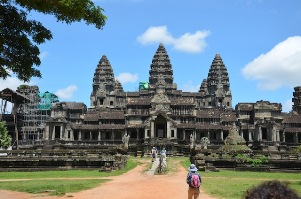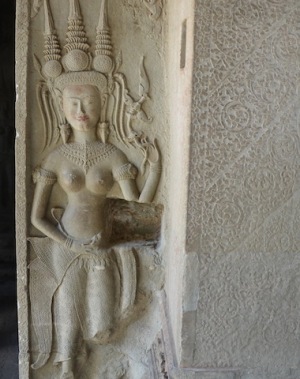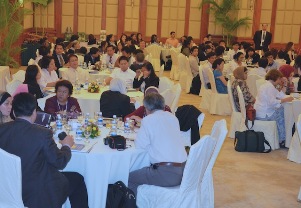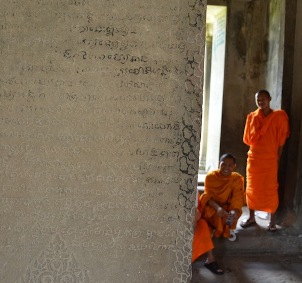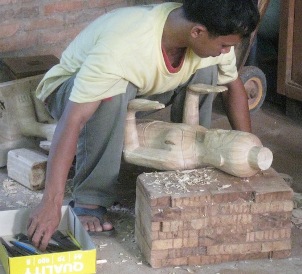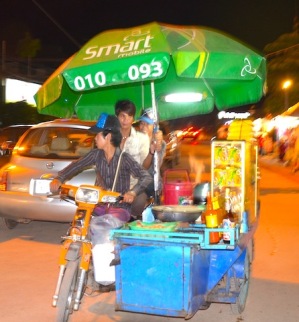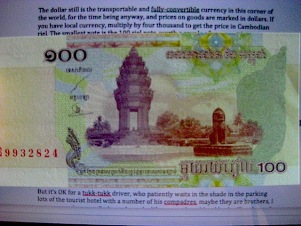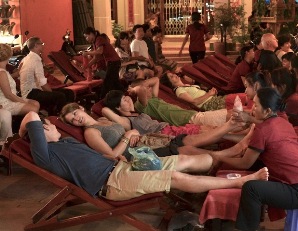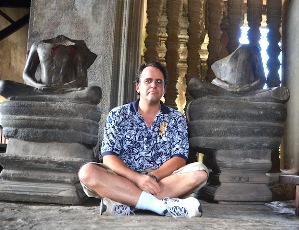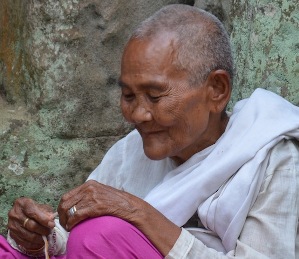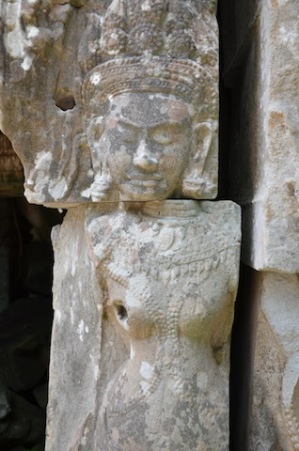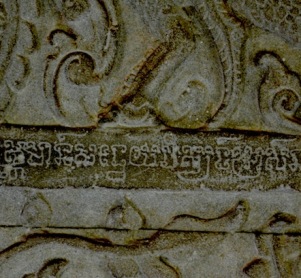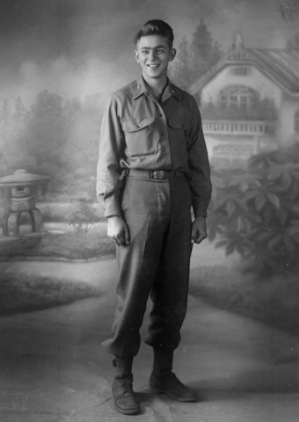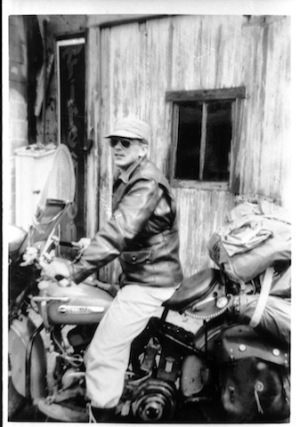|
Celestial Dancer Certification: Forty thousand elephants were used in the construction of Angkor Wat, the iconic world-heritage temple complex located in the west-central area of Cambodia. Simply translated “City Temple” the complex covers acres upon acres of cleared jungle a short tukk-tukk drive away from Siem Reap (a city named after a victory over the Siamese: “Yeah, we beat them and we named our city thus.” Siem Reap: Thailand’s Waterloo, perhaps?) It is indeed built on the scale of a city. Angkor Wat--one of over forty temples in the area--is the largest religious structure in the world, representing “the completely realized microcosm of the Hindu universe, culminating in Mount Heru”--the home of the gods (Hindu Mount Zeus?). The extensive carvings and friezes tell the story of the beginning of the world, as well as declaring devotions to various gods, rulers and builders of the complex. The temple was built during the rule of Suryarvarman II (1113-1150) and represents the highest achievement in Khmer architecture. Situated between Thailand and Vietnam, Cambodia has a strong identity of her own formed by a mélange of groups, with the Khmer being the predominant one. The other groups include peoples from Lao and Vietnam as well as Muslim Cham. Khmer religious beliefs, iconography and architecture all stem directly from India* and this can be seen in the overwhelming presence of Hindu creationism and Buddhist religious motifs. The thirty hour trip from Washington DC is well worth each cheek-numbing minute. |
|
|
These various ethnic groups and styles are known by the works of their hands; our reason for being in this neck of the jungle is to participate in a conference on Intellectual Property protection focused on protecting native handicrafts—a far throw (and welcome relief) from the rigors of our usual regulatory, but with a serious intent nonetheless: to protect and sustain indigenous cultures. The event was organized by the International Intellectual Property Institute (iipi.org) whose mission on this conference is apt-stated in the conference title: “Harnessing Intellectual Property to Protect and Promote Traditional Arts and Crafts and to Empower Women.” The US Patent and Trademark Office provided funding for the program. Intellectual Property? One might raise an eyebrow. How so? Isn’t Intellectual Property (IP) the purview of patents and software and know-how and technology? Does not the discussion usually require a Harvard MBA? Maybe in our über-Western sense, but there is work in the “IP” area that gathers to itself the deep-seated roots of lore that define a people and culture, not in a way described by coding a cyber-security method or the fine art of imaging an X-ray. As we discover, the definition of intellectual property extends to the work that has been carried out for millennia and the preservation of small groups of people who have little “say” in the greater world. That is the mission defined by the organizers of this conference, which drew 150 participants from throughout the Association of Southeast Asian Nations (ASEAN). |
|
|
Sure, it took me a couple of days to get my head around this notion, but it turned out to be well-worth the effort, especially in this world of homogeneity, world-brands and convenience stores on every corner that look like postage stamps of Western culture and sameness. It is refreshing to experience the tendrils of the unique fabric that are woven in the small villages and still convey the essence of practice handed down from parent to child throughout the millennia. With just a few days’ sampling, strong impressions emerge. This place has a preternatural innocence, a pseudo-naïvete that flows through the manners and customs, nurtured under a strong Buddhist influence or perhaps war-wounded psyche. Lacking experience in Thailand, I can only give some measure against Cambodia’s neighbor to the right and compare impressions with those of the Vietnamese, with whom the Cambodians have had a roiling relationship over the millennia. By comparison, while equally kind and friendly, Ho Chi Minh residents appear more street-smart (worldly?)--more hustle. Siem Reap feels a little like Saigon lite, the throttle backed off of redline. Another striking difference is the Hindu culture that permeates the symbology, the script and the complexion of the faces: features and coloration favor more of the western genes of SE Asia versus what might be described as Chinese features. The iconic Buddha is largely representative: rounded nose, high eyebrows, a peaceful countenance. The language is more mellifluous and less nasal than Vietnamese with more rounded consonants and less tonal constructs. |
|
|
It is like the Mekong River was a wall between the more Chinese-influenced Vietnam and the Hindu-Buddhist nature of Cambodia. Unique in its own right, the culture is a rich mixture of Khmer, Thai, Hindi and Chinese. The language is tonal, but not so strikingly so. Many people speak English in the shops. Industry and Entrepreneurs Technology is not too far away, either, as I found out to my relief. My Macintosh power supply died an untimely death. I found another at an Apple-authorized reseller a short sweaty walk from the hotel. The proprietor was a young lad who was excited because the iPad was to be available for sale in September. No problem getting a taxi ride in this town, any time of day. Walking anywhere one is offered rides from drivers of the ubiquitous “tukk-tukks”. Mechanical minotaurs, half-human and half machine, a motor-scooter connected to a quad of seats on a trailer. The motorized part can be unhooked at the end of the day (whenever that is) and the driver can head home. Tukk-tukk drivers don’t have much in the way of upward mobility, although I suppose there are ways to get ownership of one’s own concession. But some days getting a handful of rides at two bucks a piece (the standard fare from point A to point B in Siem Reap) doesn’t really allow a man to accumulate too much. Maybe you get lucky and score a couple of rides to the airport, about 6 km away (six bucks) but with gas running over five bucks a gallon at the pump, just feeding the machine can get expensive. |
|
|
Or, you can attach a small restaurant to a scooter, broaden your service and product offering and get the whole family involved in the production of income. Which brings the discussion back to the Empowering Women part of the conference. In developing countries where artisanal crafts form a basis for a sector of the economy, it is often the women that produce the goods in small shops and mini-factories. As craft are preserved, so are traditions that are passed along to new generations, if tradition is anything to be valued. The dollar is still the transportable and fully-convertible currency in this corner of the world--for the time being anyway--and prices are marked in dollars. If you have local currency, multiply by four thousand to get the price in Cambodian riel. The smallest note is the 100 riel note, worth a couple of pence, with intricate designs and representations of some of the famous monuments in the country. Life looks pretty simple for the tukk-tukk driver, who patiently waits in the shade in the parking lots of the tourist hotel with a number of his compadres--maybe they are brothers--I never got a chance to find out about the life among the tukk-tukks; I will make up for that when I come back. Nor am I sure how they divvy up the work that comes up, especially during the low season, but it appears without noticeable rancor, some sort cooperative: “Hey it’s your turn, Lok Hen, go for it”. In the marketplace--and there are good markets here, both the local earthy kind and the shiny western kind, with shaving cream and brightly packaged disposable diapers—the local food is pretty cheap. A standard lunch can be had for the equivalent of a dollar, which is about the same cost of the equivalent of a bowl of phở in Saigon. |
|
|
Not nearly as crowded as many Asian cities, Siem Reap is a jewel. It’s hard to fathom how things were like just thirty years ago as the horrid scourge that Cambodia is too-well known for: 2-3 million dead out of a population of about 12 m at the time. Even at the low end, a staggering 1000 people a day (on average) were killed during Pol Pot’s reign. The people of Cambodia suffered famously under Pol’s grip, and it was hell-on-Earth from 1975-79. The unique form of genocide that was practiced during that period was neither purely ethnic nor religious, but largely carried out against intelligentsia and rural-vs-urban or “old” versus “new” people. Many of the educated, and much of the urban population, were forced to collectivized farms where they were starved, beaten, worked to death or executed. The word Khmer is a strong one, from the western (my) under-informed point of view, as it is associated strongly with the Khmer Rouge (or red Khmers) who were in charge of this country during a phantasm of brutality formed on the notion of an agrarian utopia: self-sufficient isolated from the world, like Jonestown writ enormis. Pol Pot read his Mao, but didn’t learn any lessons. Now, with a population with a median age of about 23 years, the past is exactly that and peace in Cambodia is one of the grateful results of UN peace-keeping, free elections and a measure of hope, and foot massages. |
|
|
Khmer culture, on the other hand, stretches back over 2000 years and is a mix of indigenous, Hindu and Buddhist influences. The control of the area, rich in natural resources and occupied since Neolithic times, swapped back and forth between the Hindi and Buddhists. The adoption of the “foreign” religions into existing Khmer beliefs created a rich and complex belief system, but the native gods were less likely to be enshrined in the permanent stone temples. The temples around Angkor Wat, with pedigree stretching to the 8th century, were largely completed by the early 14th century with the most activity under the Jayavarman lineage of rulers. “J” the Seventh ( JVII, c. 1181-1220) undertook a frenzied building spree that included several temples, including my favorite Preah Khan, as well as hundreds of hospitals in the region. As Rick points out, this was the same period of time as the building of the great cathedrals in Europe. After much of the building ended and for several hundred years, the temples were consumed by the jungle as commercial and political power and the population shifted east to Phnom Penh. The temples around Angkor Wat were “re-discovered” by the French in the late 1800s and active preservation efforts continue to this day. Many of the icons and images were trashed not by nature, but by man, notably Jayavarman VIII, who beheaded and de-armed thousands of the Buddhist icons in a shift back to Hindu beliefs. |
|
|
The temples are not so much spaces for gathering of the faithful as they are shrines to the gods, lacking the soaring internal spaces characteristic of European cathedrals. The Preah Kahn temple was more than a temple and was used as a Buddhist university. According to modern thought, it was built on the site of a major battle where the Khmer fought and defeated the Cham people. The temple was dedicated to Jayamarman’s father Dharanindravarman (say that five times fast). Everywhere is stone and jumble and endless religious imagery. The walls are covered in Khmer inscriptions, which mostly deal with honorifics to the gods and the kings; very little is depicted about the daily lives of the people. Everywhere are Apsaras, the “celestial dancers” whose role is to entertain gods and fallen heroes. Apsara and the divine forms of the Devata adorn the temples and are associated with fertility, good luck and overall good blessings. Thus to the theme of the conference. With a large segment of the population of SE Asia minimally industrialized, many families rely on the creation of traditional art and cultural expressions to feed their families. Transitioning from an agrarian-based economy, to a tourist-based economy has opened up possibilities for Cambodian families to support themselves and (marginally) move up their standard of living. The result of the infusion of foreign influence (and cash) is the dilution of traditional culture. The world is a more interesting place as result of this diversity and the buttressing of traditional values and practices is a worthwhile endeavor. |
|
|
One of the issues is the mis-use or mis-appropriation of cultural symbols. One of the attendees took offense over the use of the Apsara was used in the west. Flames were depicted consuming one Aspara, which were offensive and in another case an image featured an Aspara wearing a bikini top, which are traditionally bare. Come copyright protection of expressions of folkloric images and the work of native artisans. Other questions of the conference revolved around how to balance society transition (as the agrarian economy moves to manufacturing), preserve the culture, and achieve economic fairness. To balance the whole of these requires protection of the essence of the culture. Thus, efforts to protect the images and traditional methods steered towards “Certification”—a validation of the origin. So, a move towards the preservation of these images would be to establish Certification Criteria to authenticate the source of traditional means of expression. A lively discussion about the merits of Certification and how it applies to “Traditional Cultural Expressions” was conducted and, ultimately, the question that hangs in the air is “How do you Certify a Celestial Dancer?” It was suggested, in the end, that the way to do it would be to create collectives, develop standards and work towards a branding regimen. |
|
|
I picked up a wooden Apsara at a small shop in the market. The proprietor of the enterprise, a neatly-laid out antiques and handi-craft concern, was hand-carving new wares in the front of the store. His daughters (fourth-graders, perhaps) worked on their English lesson in the back of the store, singing tunes from “Titanic”. I am pretty certain that the Celestial Dancer was authentic, but it carried no independent Certification mark. Home Arriving Dulles Airport at the end of this journey, a looping video greets guests at Baggage Claim 3. There are no words in this video and no direct message, just a continuous churn of images of the US, focused on mostly Western US icons: cowboys, horses, Native Americans and vistas of the plains. Cultural icons. Heritage to be preserved and celebrated everywhere, just as in Siem Reap.
Mike Violette |
|
|
|
|
|
*Reference: Ancient Angkor. Michael Freeman, Claude Jacques. Amarin Printing and Publishing. 2010.
|
|
|
|
|
|
In Memoriam: It is with sadness that I convey that Liv’s great and loving father and my father-in-law passed away a few hours into his 88th Year. Don Syvrud was born in a small town in Wisconsin and left to join the Army, serving in Japan during the re-building of that country after WWII. He later served in Korea and returned to marry Beverly Wurtzler from his hometown. From his humble beginnings he went onto gain a PhD in Economics at the University of Wisconsin. Don and Beverly lived in Norway where he was a Fulbright Scholar and later went to Brazil where Don worked for the Treasury department. Returning to the US, he worked with Henry Kissinger on the Paris Peace Talks, flying the Concord SST to Paris several times. After retiring from serving his country, he worked as an Executive Director at the International Monetary Fund. Later, he spent nearly a year in Liberia, working to re-build that country and spent time in Kabul after the exit of the Soviet forces from Afghanistan. In sharp contrast to his amazing global achievements was his simple love of the Earth, making things grow, driving his tractor, cultivating trees, building stone walls around his property and spending time with his family, which grew to include 10 grandchildren and several foster children. A role model for many, a man who accepted people of every background and culture, from the highest in the government to the man who delivered gravel for his driveway. He appreciated them all and made everyone around him feel comfortable and valued. I knew him as a man who treated me like another son, was keenly interested and supportive, loving and always understanding. He loved painting, music, dancing and ice cream. His last great gift was of his body, which went to Johns Hopkins to further the understanding of Parkinson's disease, which he fought valiantly and tirelessly. He will be missed by many. Mike |
|
acbcert.com
American Certification Body, Inc. (ACB)
6731 Whittier Avenue | Suite C110 | McLean, VA 22101
703-847-4700
